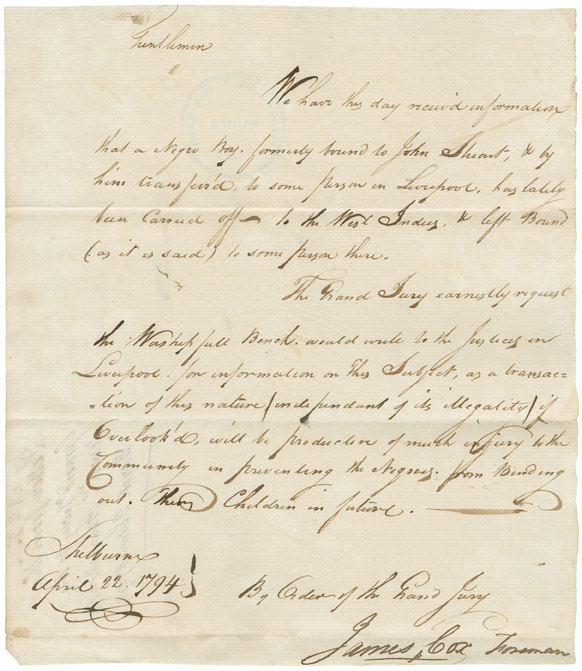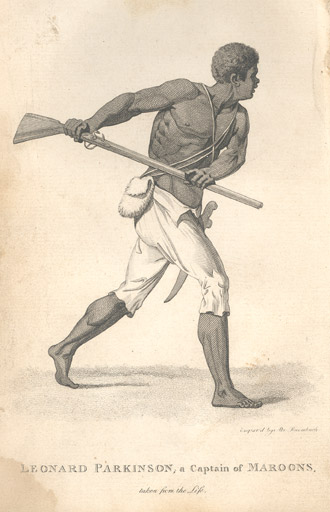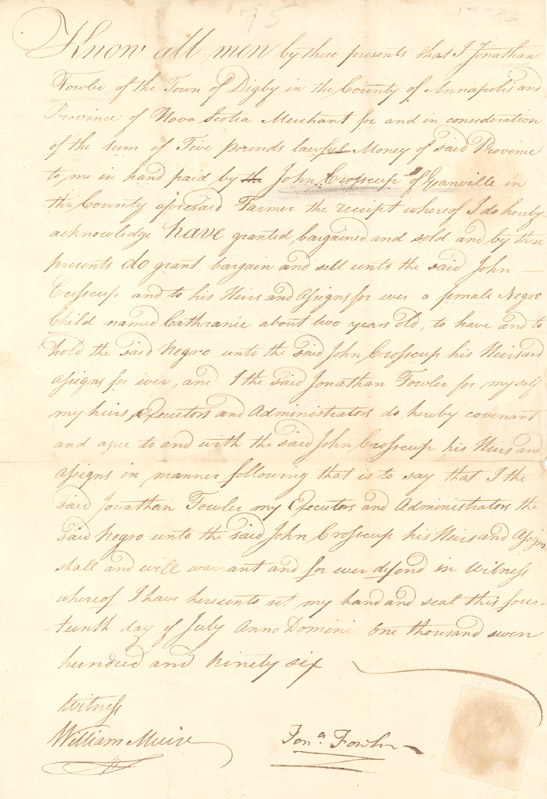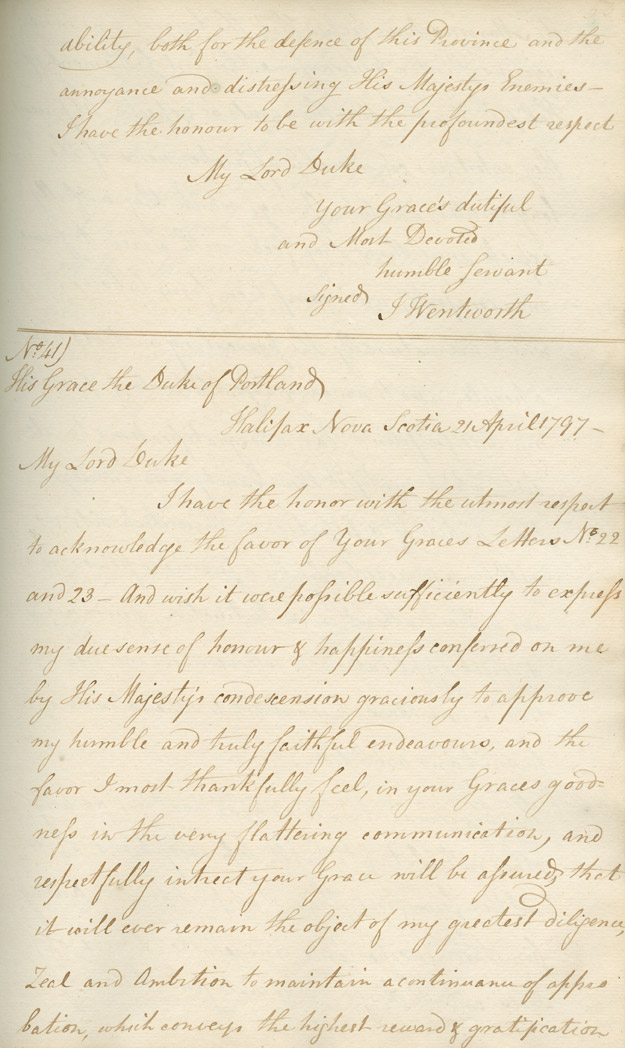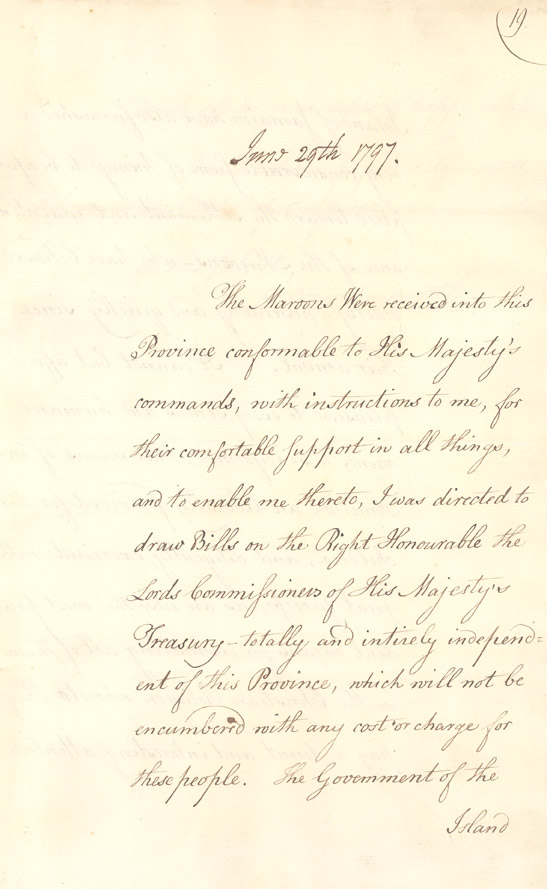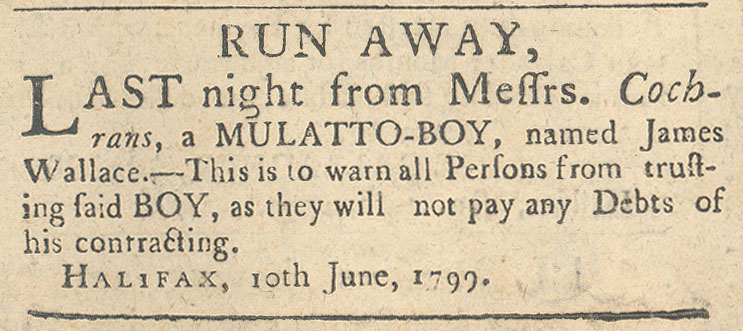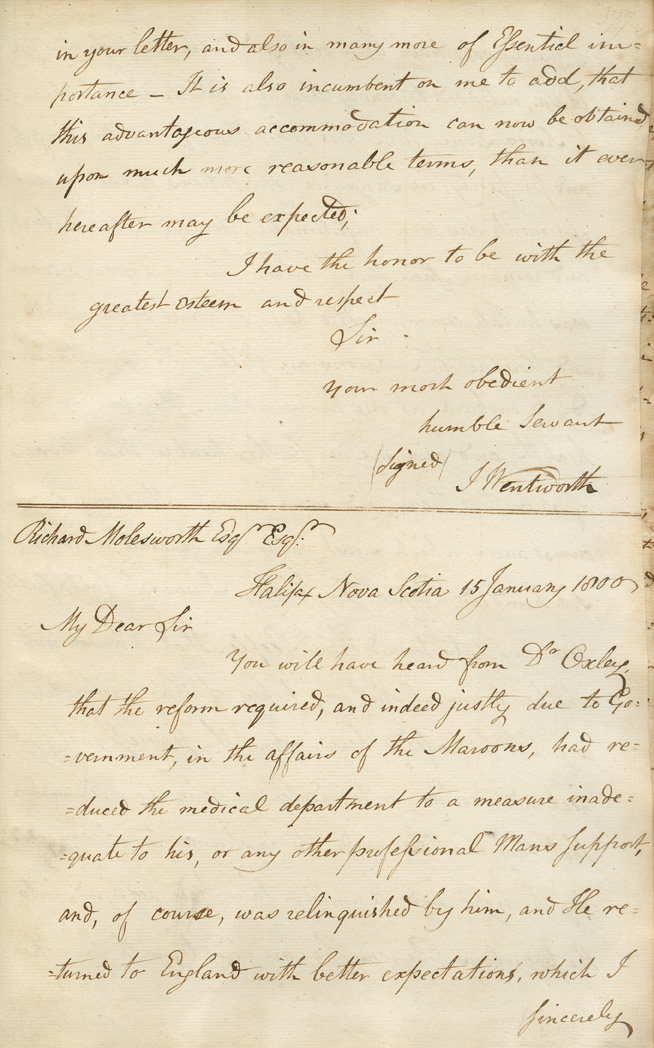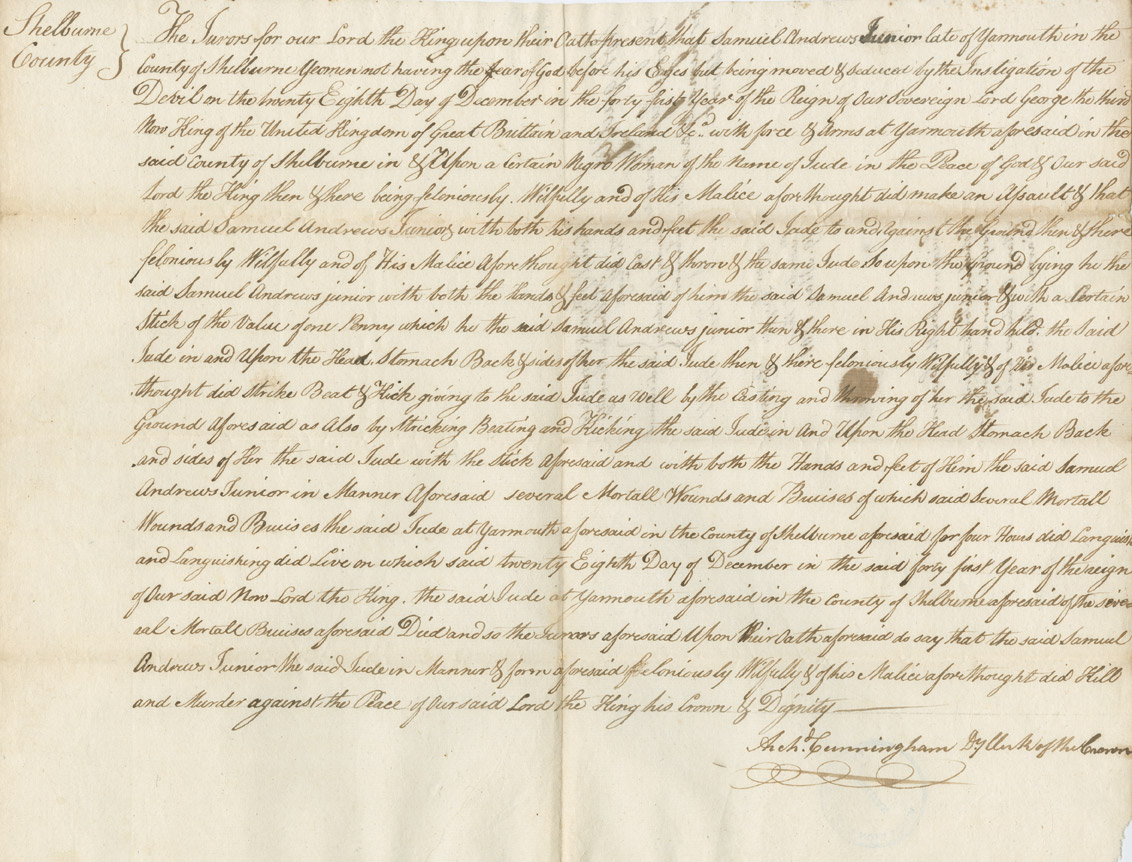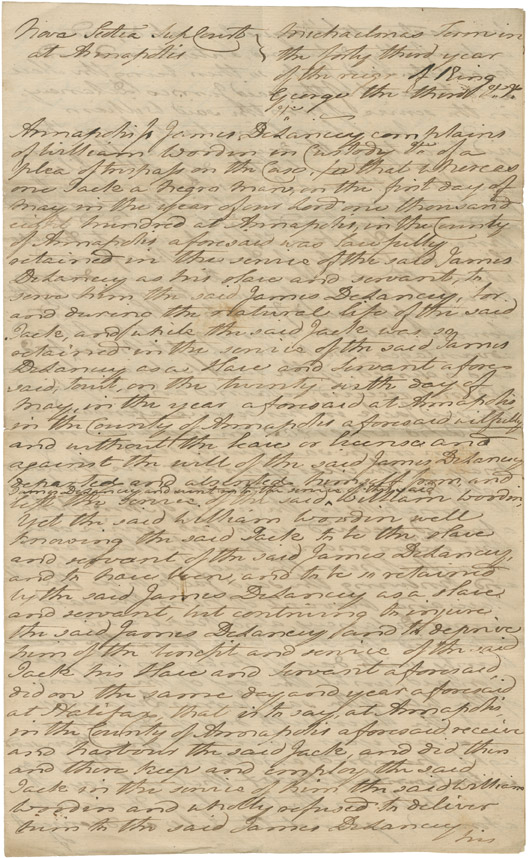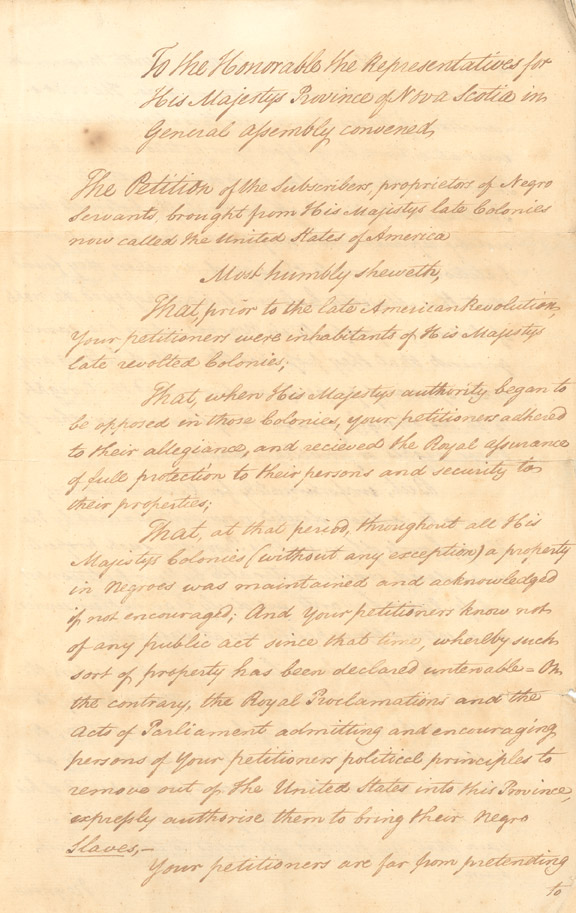Nova Scotia Archives
African Nova Scotians in the Age of Slavery and Abolition
The Decline of Slavery, 1793-1812
From the beginning, enslaved African Nova Scotians challenged slavery by escaping from it. Some free African Nova Scotians who were enslaved or re-enslaved courageously protested their treatment in court. For example, in 1791, Mary Postell of Argyle protested to the authorities when she was re-enslaved and her daughter Flora kidnapped into slavery. The slaveholder, Jesse Gray, was prosecuted. However, the magistrate sided with him and Postell and her daughter were left in a state of slavery. Jude, slave of Samuel Andrews at Tusket River, fared far worse. In December 1800 she was beaten to death by Andrews and his sons, who were tried the following year for murder but acquitted.
Until the late 1790s, courts in Nova Scotia continued to uphold the legal interests of slaveholders. Thereafter, courts began refusing to uphold the ‘right’ of slaveholders to hold human beings as private property. This encouraged more and more slaves to run away, challenging the slaveholder to test his title in court. In 1808 a group of slaveholders in Annapolis protested that court decisions were making it impossible to maintain their right to own slaves and asked the Assembly for assistance. A bill supporting the slaveholders was introduced but it did not pass. There were few slaves left in Nova Scotia by the time the Black Refugees began to arrive during and after the War of 1812.
Although 1000 Black Loyalists from Nova Scotia emigrated to Sierra Leone, the majority remained. A number of African Nova Scotian communities survived, at least for a time. These included the Birchtowns (Guysborough and Shelburne Counties), Negro Line (later Southville, Digby County) and Tracadie (Guysborough County). There were 23 black families at Tracadie in 1808; by 1827 this number had increased to 30 or more. Few black people in Halifax participated in the exodus to Sierra Leone, perhaps because of better economic opportunities in the military city. Halifax’s black population was 422 in 1791 and 451 in 1802.
In 1796 almost 600 Maroons were deported from Jamaica to Nova Scotia, following their rebellion against the colonial government. They worked on the third fortification at the Citadel in Halifax and on Government House, and performed other manual labour. They also attempted to farm. However, like the previous occupants of the poor, rocky land at Preston, they had little success. The Maroons found farming in Nova Scotia difficult, especially as the climate prevented the growing of familiar food crops such as pineapples, bananas, yams, and cocoa. A small number interested in farming were resettled from Preston to Boydville (Maroon Hill, Halifax County). Lieutenant Governor Sir John Wentworth attempted to change the Maroons’ culture by introducing them to Christianity. However, the Maroons were not interested in giving up their own religion and would not work for less than the wages a white person would receive. In 1800 virtually all of the Maroons took advantage of the opportunity provided by the Sierra Leone Company to emigrate to Sierra Leone.
Information on the lives of African Nova Scotians during the period 1793 to 1812 is scarce. An 1812 document possibly written by William Sabatier, and preserved in the Colonial Office records, gives some interesting insights. The writer remarks that black Nova Scotians are well known for their good work as domestics and seamen, and also value their own community and culture. The same source tells us that nearly one-sixth of the population of Halifax was black.
Results 1 to 15 of 18 from your search:
Runaway slave advertisement
Date: 15 March 1794
Reference: Nova Scotia Archives Weekly Chronicle 15 March 1794 page 1 (microfilm 8165)
Case of a black boy carried off to the West Indies
Date: 22 April 1794
Reference: Shelburne County Court of General Sessions of the Peace Nova Scotia Archives RG 34-321 J 145
"Leonard Parkinson, a captain of the Maroons"
Date: published 1796
Engraver: Abraham Raimbach
Reference: Nova Scotia Archives B. Edwards, The Proceedings of the Governor and Assembly of Jamaica, in Regard to the Maroon Negroes… to which is prefixed an Introductory Account… of the Maroons… (London, 1796) (F210 /Ed9)
Deed of sale of a slave child
Date: 14 July 1796
Reference: Chesley family fonds Nova Scotia Archives MG 1 volume 177 number 75
Wentworth report on the Maroons
Date: 21 April 1797
Reference: Commissioner of Public Records Nova Scotia Archives RG 1 volume 52 number 41 pages 53-60 (microfilm 15238)
Wentworth's instructions regarding the recently arrived Jamaican Maroons
Date: 29 June 1797
Reference: Commissioner of Public Records Nova Scotia Archives RG 1 volume 419 number 19 (microfilm 15460)
Letter from Sir John Wentworth to the Duke of Portland
Date: 23 June 1798
Reference: Commissioner of Public Records Nova Scotia Archives RG 1 volume 52 number 57 (pages 186-9) (microfilm 15238)
Advertisement about runaway indentured servant, James Wallace
Date: 11 June 1799
Reference: Nova Scotia Archives Royal Gazette 11 June 1799 page 3 (microfilm 8168)
Letter from Sir John Wentworth to Richard Molesworth
Date: 15 January 1800
Reference: Commissioner of Public Records Nova Scotia Archives RG 1 volume 52 pages 377-9 (microfilm 15238)
Advertisement for lease of a woman slave
Date: 24 June 1800
Reference: Nova Scotia Archives Royal Gazette 24 June 1800 page 3 (microfilm 8168)
R. v. Andrews (indictment of Samuel Andrews Jr. for the murder of a "Negro woman of the name of Jude")
Date: 19 May 1801
Reference: Shelburne County Special Court of Oyer and Terminer Nova Scotia Archives RG 42 SH volume 1 file 4
Benjamin Belcher of Belcher Street (near Port Williams), estate inventory
Date: 1802
Reference: Nova Scotia Archives Kings County probate records estate case file B7 (microfilm 19779)
DeLancey v. Woodin (plaintiff's statement of claim against the defendant for harbouring 'Jack', a fugitive slave)
Date: 20 August 1803
Reference: Supreme Court of Nova Scotia — Annapolis County case files Nova Scotia Archives RG 39 C (AP) volume 1 file 2
Petition of John Taylor and other slaveholders
Date: 3 December 1807
Reference: Nova Scotia House of Assembly Nova Scotia Archives RG 5 series A volume 14 number 49 (microfilm 15591)
Commission to Silas Hardy of Granville as captain of a black militia company
Date: 17 November 1808
Reference: Nova Scotia Archives MG 100 volume 161 number 36a (microfilm 15201)

